Thuja western "Brabant": description, planting and care
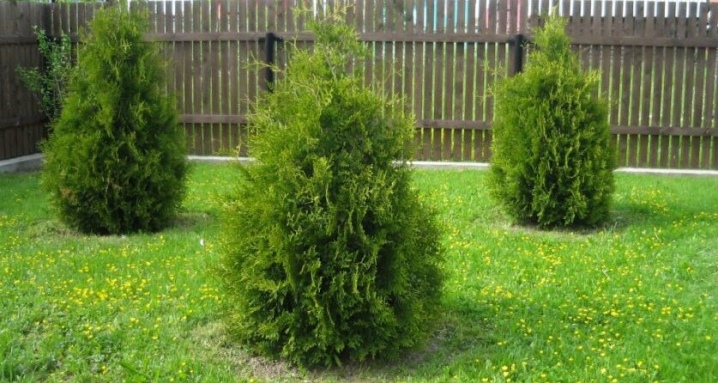
It is very rare in landscape designs of personal plots or parks that there is no such a beautiful plant as thuja. They use it mainly because the plant looks impressive and easy to care for. Thuja is similar in appearance to a cypress tree. However, unlike him, it can grow anywhere in Russia, including in Siberia. There are 5 types of thuja, among which the western is considered the most popular. Many gardeners want to get it on their site.
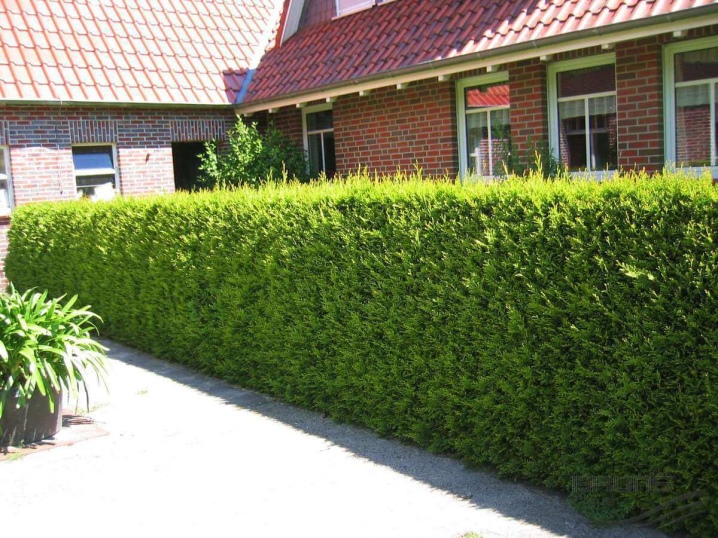
Description of the variety
Thuja western has won the love of many gardeners due to the fact that it grows very quickly. The only tree that can match it in growth is larch. The size of the thuja is truly impressive. So, an adult plant can grow up to 20 meters, and the crown diameter can reach four meters. However, in Russia, plants that do not exceed 4–5 meters are most often planted.
Within one year, thuja can grow in height up to 30 centimeters, and in width - up to 10-12 centimeters. This tree looks very beautiful. It has rather dense branches that grow almost from the very bottom, while the shape of the thuja is conical. The bark of the plant has a grayish color, moreover, it peels off easily. The needles have a light green color and do not change it during the whole year. The root system of the thuja is quite large, it is located horizontally to the surface of the earth. It never goes too deep.
Most often thuja "Brabant" is used for the "construction" of hedges, but there are also separately planted plants.
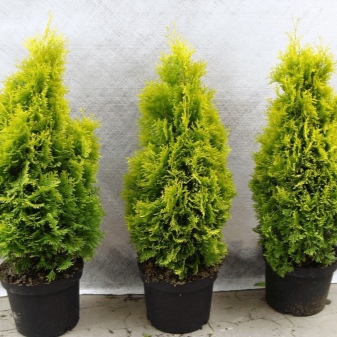
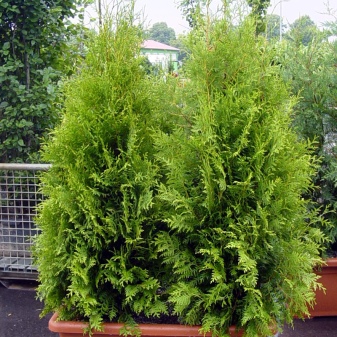
Thuja begins to bloom around mid-spring. At this time, very small cones of brown color and oblong shape appear on it. Their length does not exceed one centimeter. This variety is considered quite hardy, so it can be found even in the north of the country. He is not afraid of any temperature extremes, and thuja also has the ability to survive on any soil.
More recently, some gardeners have turned their attention to the Golden Brabant sub-variety. They were attracted by the unusually beautiful color of the needles. It was yellow-golden and harmoniously combined with snow-white snow. In addition, its color does not change for almost a whole year.
To make the thuja look more saturated, it is necessary to plant it in the sunniest place. However, one should not forget about the shadow, because under the direct scorching sun, it will quickly die.
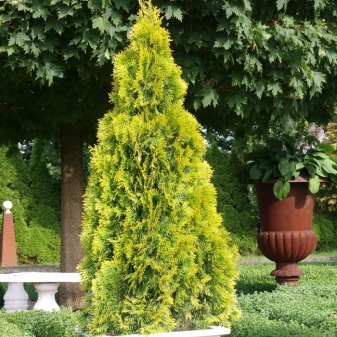
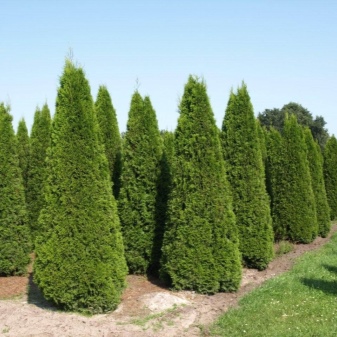
Advantages and disadvantages
Since the western thuja "Brabant" has practically no drawbacks, most gardeners prefer to plant it on their site. And this is not in vain, because thuja grows very quickly, is practically unpretentious in care, is resistant to severe frosts, easily and simply multiplies, and also lends itself to pruning.
However, the latter advantage is more of a disadvantage, because it is necessary to trim thuja at least 2 times a year, which is not very convenient for those who work a lot... In addition, in the first time after its landing in the ground, thuja requires increased attention. This is regular watering, and tying branches to the trunk with a strong rope, and shelter for the winter with a layer of mulch.
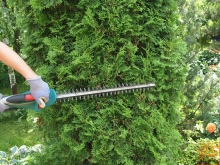
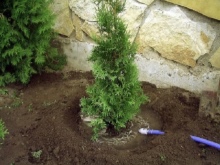

How to plant correctly?
When planting a thuja, several recommendations of specialists should be adhered to. First of all, you need to choose the right place for it, acquire a healthy plant with a good root system.You will also need a high-quality substrate and familiarization with some planting rules.
It is best to plant the plant in spring. However, this can be done in the fall, in the first half of September. If this happens in the autumn, then at least 2 months should remain before frost. This is necessary so that the thuja can take root well and endure the cold winter.
The choice of location is also very important. In order for the western thuja "Brabant" to grow beautiful and lush, it must be planted in a not too dark place, but not in the sun, as mentioned above. A plot with a small penumbra will be an excellent option for a thuja. Here the tree will feel great throughout the day.
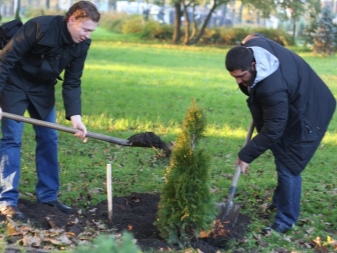
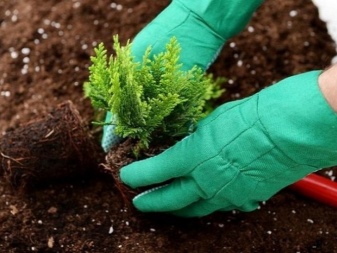
Although thuja is not picky about the type of soil, in more nutritious soil, which must be prepared in advance, it will grow a little faster. In addition, the tree will be able to delight everyone with green needles for almost a whole year, moreover, it will quickly take root. The composition of the substrate should include the following components:
- 1 part sand;
- 1 part peat;
- 1 part of humus;
- 2 pieces of ordinary land.
In addition, under each tree it is necessary to fall asleep half a kilogram of nitroammophoska. In case of group planting in open ground, thuja should be at a distance of 1-2 meters from each other. This way they will not compete with each other. To create a hedge, the distance between the thuja should be no more than 50 centimeters. In this case, they grow almost side by side.
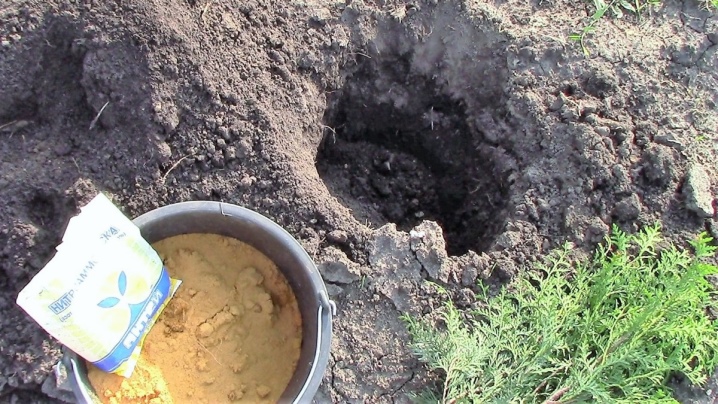
Reproduction methods
There are several ways in which you can propagate thuja: with the help of seedlings, cuttings, seeds, that is, cones.
Saplings
They are best planted in spring. Before planting, the roots of the thuja must be thoroughly dried, but it is still not worth destroying the earthen lump. On average, a hole is dug one meter in both depth and width. Next, a drainage layer is laid at the very bottom, which consists of either brick or expanded clay.
Then the seedling must be placed in the middle of the pit, deepened a little and sprinkled thoroughly with earth, after which it must be well tamped so that the root collar is at ground level. In addition, the seedling itself should not change its location. Next, it must be well filled with water, approximately 1 bucket per 1 seedling.
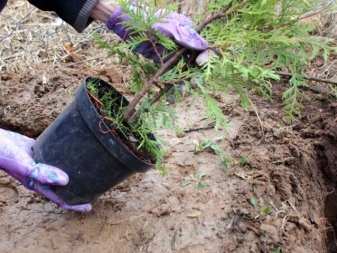
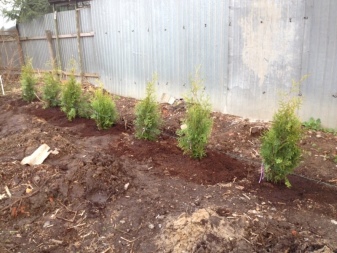
Cuttings
When pruning thuja, its branches can be used as cuttings from which new trees are grown. In this case, planting should be carried out in the autumn. The length of the cutting should be between 10 and 15 centimeters. After cutting, they can be placed either in a jar of water or in damp ground. In the first case, it is necessary to wait for the roots to appear and only then to plant them in the ground. The container with cuttings can either be covered with plastic wrap, creating greenhouse conditions, or simply left in a warm room. Only in the spring, when the cuttings are well rooted, can they be planted in open ground.
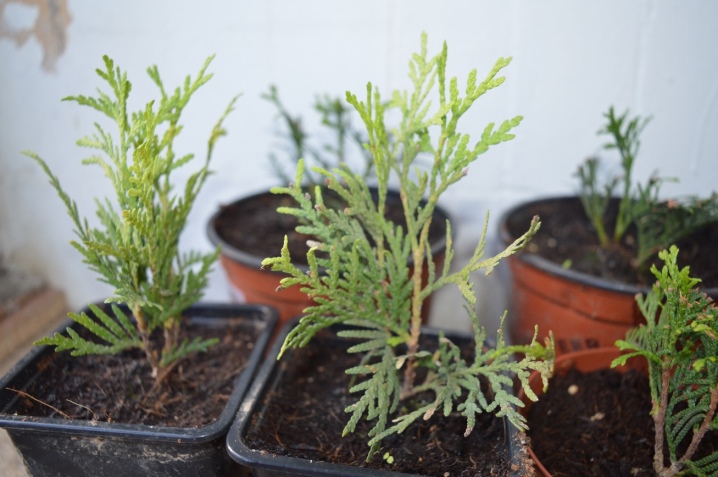
Seeds
This breeding option allows you to grow not only healthy, but also strong plants. However, in this case, its decorative qualities may be lost. First, you need to collect the required number of buds, and then place them in a very warm place. When they begin to crack, you need to get the seeds out of them, sow them in well-moistened sand and put in a warm place.
When the seeds germinate after a few days, they can be transplanted into containers with a substrate. It should include the following components:
- sod land;
- sand;
- peat.
Next, the containers with seeds must be placed in a fairly cool place, for example, in the basement. After a short period of time, they are taken out and placed in a warmer place. The earth must be regularly moistened. When the first seedlings appear, they must be hardened. For this, containers are placed on the balcony or directly on the street. First, for a few minutes, and then the residence time is increased (up to landing in open ground).
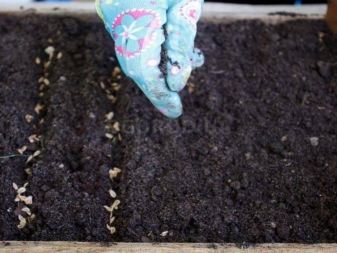
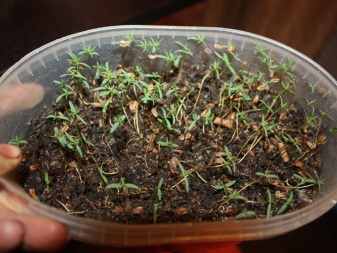
How to care?
Thuja "Brabant" is not a very picky plant, but its cultivation still takes time. For it to become a sturdy tree, the thuja must receive proper care. It consists not only in timely watering, but also in timely feeding, regular circumcision. During dry periods, the plant should be watered more abundantly. It will be enough 2 times a week for 2 buckets of water under one tree, but if necessary, you can water it every day.
But still, you should not be too zealous, since thuja can slow down its growth in highly moistened soil. If it is possible to spray, it will be better to water in this way. In addition, after each watering, it is necessary to loosen the soil so that a crust does not form.
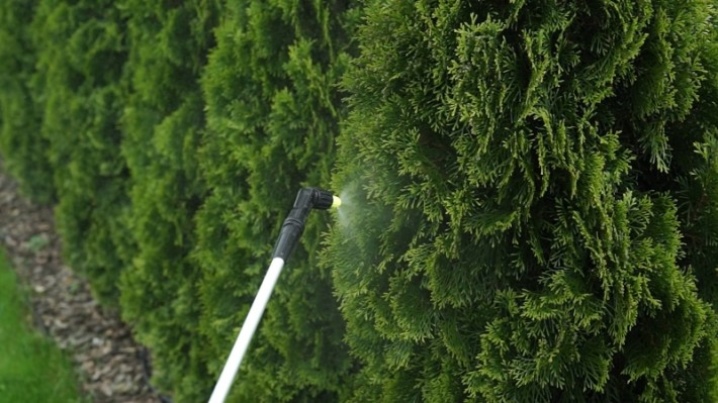
Fertilizer
If all the necessary fertilizers were applied during planting, then they will not be needed for 2 years. In addition, mulching can slightly improve the quality of the land. Both peat and small chips are suitable as mulch. Since there are too strong frosts in winter, the plants must be covered. You can use the same mulch for this.
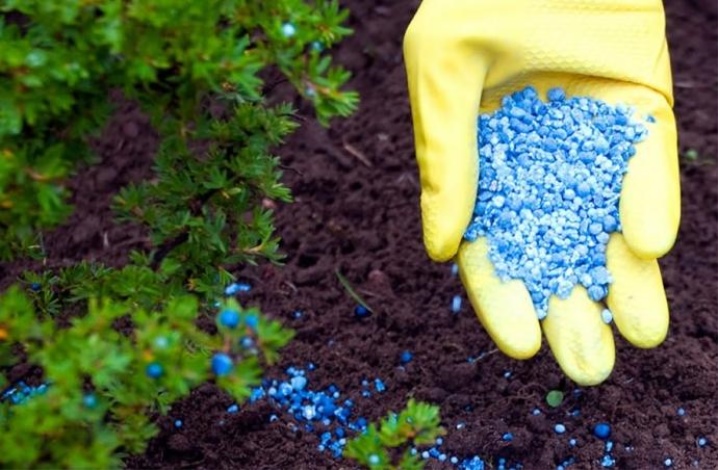
Top dressing
It is best to spend it in early spring, in March. However, if necessary, it will be possible to repeat the feeding in June, and then in July. A complete dressing purchased from gardening stores is most suitable. But you can also use organic fertilizers, which will be no less effective.

Pruning
In order for the thuja to always remain thick, beautiful and lush, and also have a luxurious crown, it must be regularly trimmed. Otherwise, the tree will look completely ugly. The formation of the crown must begin immediately after planting the thuja in the open ground. In the future, only some branches are corrected. It is necessary to carry out a haircut with a pruner.
If thuja is planted to create a lively dense and dense hedge, it is necessary to start cutting the plant in March. Further haircut occurs only six months later, which will allow you to get a rather thick and dense crown. In addition, throughout the summer, you can make additional correction of some branches so that the shape always remains beautiful. In this case, it is imperative to follow some rules.
- First, you need to remove all branches broken or damaged during the winter.
- Then you can start the trimming process. Only a third of the shoots need to be trimmed. In addition, you must try to do it evenly so that the crown looks not only neat, but also beautiful.
- This process is best done on a cloudy day. This will allow you to avoid further yellowing of coniferous leaves, because during cutting, moisture is released, and then it evaporates. And if it is a sunny day, it will lead to burns.
- Once the pruning is complete, the tree should be well watered.
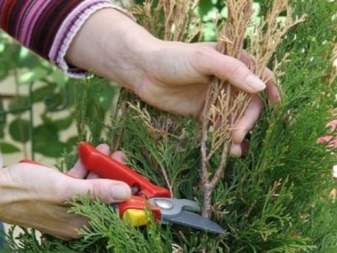
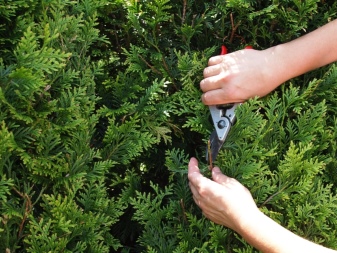
Diseases and pests
Today, along with the usual diseases, there is a fairly large number of diseases that are transmitted through other plants and the prevention of which must be carried out.
Phytophthora
In a plant, first of all, the root system is affected, and then the disease progresses upward. As a result, the thuja will begin to fade, its foliage will change its color to gray. Plaque may appear on the trunk. Roots become brittle over time. This disease appears most often due to an excess of moisture in the ground.
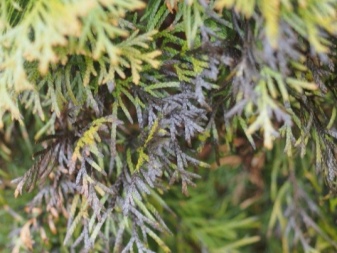
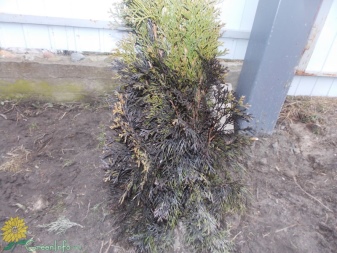
To prevent it, it is necessary to treat the thuja with a solution of fungicides.
Brown shoots
Most often, this disease occurs due to fusarium. On the thuja, the scales begin to turn yellow, and then the entire shoot becomes brown. To prevent it from spreading to the entire plant, the affected areas must be urgently removed, after which it must be sprayed with "Fundazol".

Rust
Such a disease appears in early spring. The foliage begins to darken and fall off. Young saplings give in to him most of all.For the fight, it is necessary to use fungicides that contain copper.
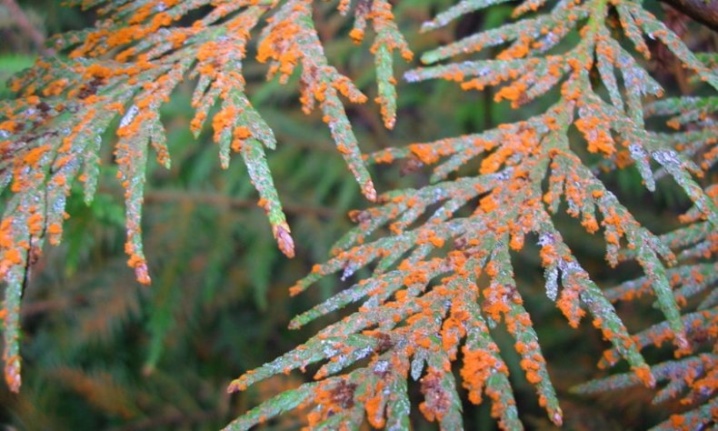
Thuyi false shield
Yellow ulcers begin to appear on the bark of the plant. It is imperative to start fighting with them immediately, otherwise the whole tree will be covered with them, and then it will perish. In the fight against them, you can use drugs such as "Rogor" or "Karbofos". In addition, the plant can be treated with soapy water for prophylaxis.
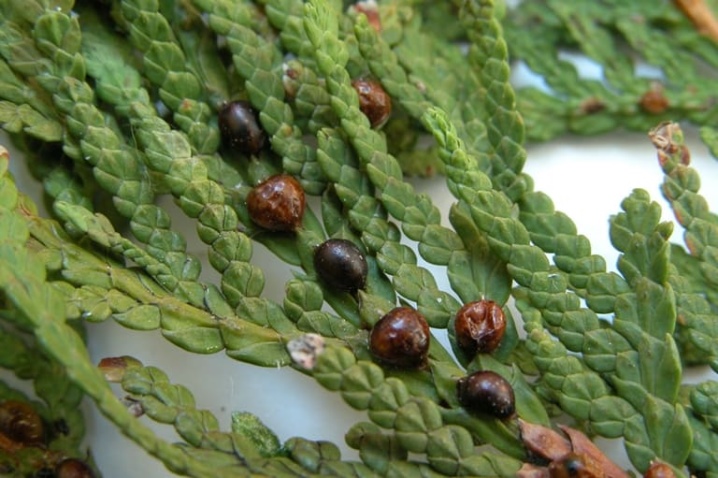
The appearance of pests is also can adversely affect the development of thuja.
- Weevils. They eat the bark of young shoots. Any insecticide can be used to combat them.
- Spider mite. It can entangle almost a whole tree with its web. In the fight, special preparations are also used, or folk remedies, such as garlic, are used.
- Sheep worms. Most often, the roots of the plant are eaten up. But their larvae can feed on young shoots. In order for them not to appear on the plant, it is necessary to make good drainage, as well as liming the soil.
- Thuy lobeed. It feeds on the bark of the plant, while it leaves the passages. It is necessary to constantly inspect the tree to notice its appearance. After that, you must immediately treat it with special preparations. For prevention, you can use Bordeaux mixture.
- Thuya aphids. It settles on the coniferous leaves of the plant and feeds on their sap. For the fight, you can use "Karbofos".
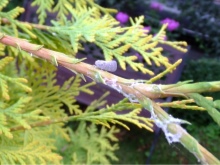

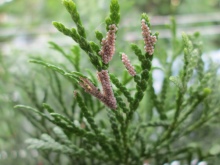
If you notice the appearance of pests and possible diseases of thuja in time, then the plant will always look beautiful.
Application in landscape design
Tuy "Brabant" is used both for creating hedges and for single plantings.
As a fence
In some areas, the owners simply make a fence out of them. This application makes the site quite unusual and beautiful. In addition, practically nothing is visible through the dense layer of coniferous foliage.
With the help of such landings, you can create a wonderful place to relax, where no one interferes. It also makes it possible to enjoy fresh and clean air.
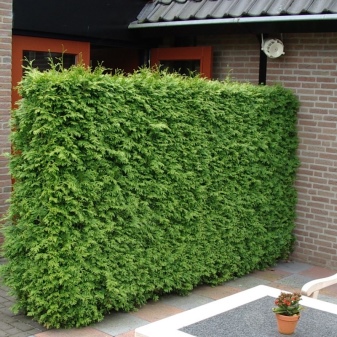

Single landings
The trees that stand in splendid isolation on the backyard look no less beautiful. This is especially beautiful in winter, when all the trees lose their foliage.
Summing up, we can say that a plant like the western thuja "Brabant" can decorate any site or park. However, in order for her to delight her with her beauty all year round, it is necessary to give her appropriate care.


For the western thuja "Brabant", see the next video.



































































The comment was sent successfully.